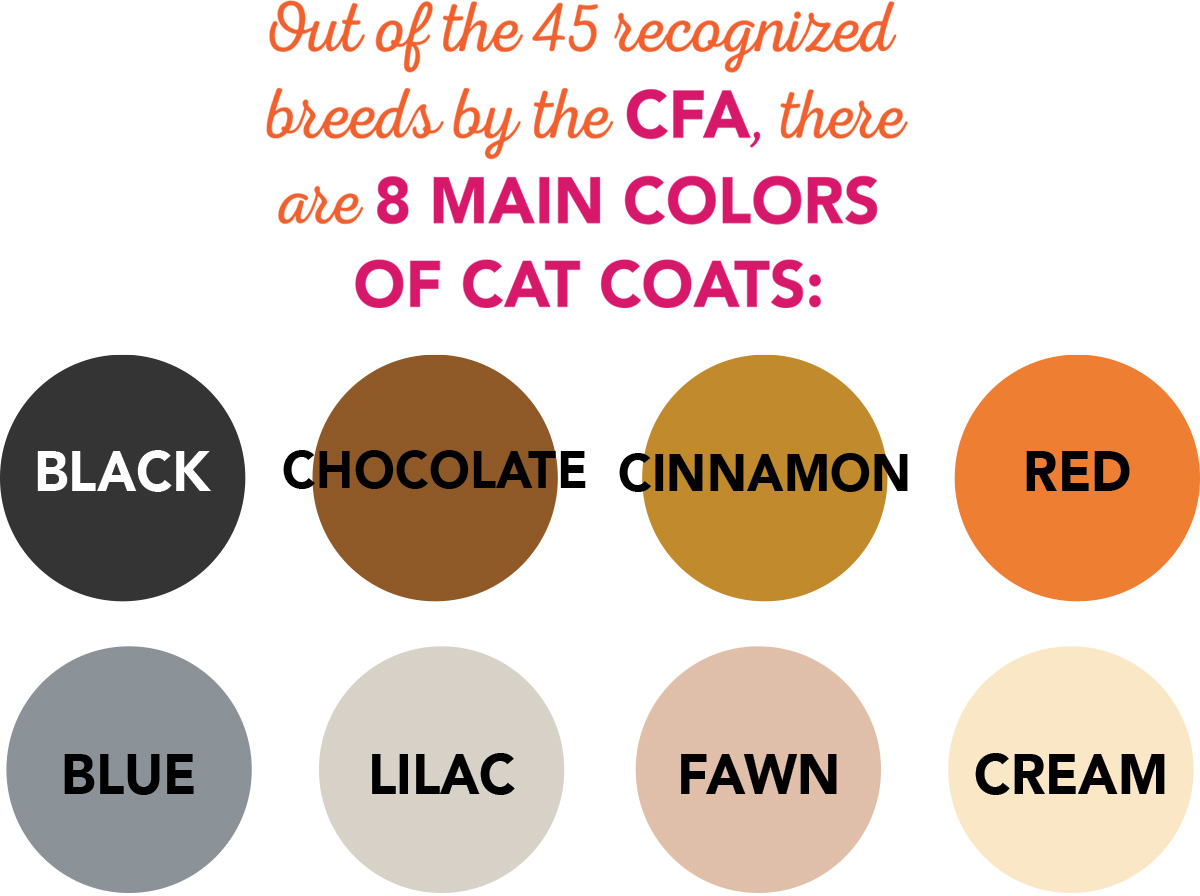Cats

By Deborah Hansen
 n the dog world, owners generally know if they have a black Labrador Retriever, a blue merle Australian Shepherd, or a “designer” mutt such as a yorkipoo or doodle. Yet when it comes to cats, most owners give a blank stare when asked what kind of cat they have.
n the dog world, owners generally know if they have a black Labrador Retriever, a blue merle Australian Shepherd, or a “designer” mutt such as a yorkipoo or doodle. Yet when it comes to cats, most owners give a blank stare when asked what kind of cat they have.
Much of our dog breed knowledge comes from the American Kennel Club (AKC). And while many dog owners do not have purebred dogs, the AKC gives us the words we need to describe dogs. We can say an owner has a lab, a labradoodle or a lab mix. All those words describe the breed of dog.
Recognized Cat Breeds
The Cat Fanciers Association (CFA)1 was founded in 1906. Currently, the CFA recognizes 45 breeds of cats, of which 42 are eligible to compete. The second organization is The International Cat Association (TICA)2 which was founded in 1979 and currently recognizes 73 breeds. Both organizations also acknowledge a household pet category.
The more common purebred cats boarding and grooming businesses may see are Persians, Exotics, Maine Coons, Scottish Folds, Ragdolls, Siamese, Turkish Vans, British Short Hair, LaPerm, Russian Blue, Norwegian Forest Cat and Manx.
While some owners have purebred cats and others have cats that highly resemble the purebred version, many owners “just have a cat.” We categorize these cats by the length of their coat. When it comes to mixed-breed cats, we call the breed Domestic Short hair (DSH) or Domestic Long hair (DLH). After you know the breed of the cat, the next identifiers used are the color and pattern.

Out of the 45 recognized breeds by the CFA, there are eight main colors of cat coats: black, chocolate, cinnamon, red, blue, lilac, fawn and cream. Cats with an orange appearance are classified as red and gray-colored cats are called blue. The unique color of ruddy is reserved for the Abyssinian. Ebony, chestnut, and tawny are colors unique to the Octicat and Oriental breeds.
An important tidbit for groomers is that the diluted colors (blue, lilac, fawn and cream) tend to have a more cottony coat which has a higher chance of matting than the dominate coat colors do. These coat colors do need a shorter grooming schedule to prevent matting.


Cats can have one of four tabby patterns: 1) Mackerel, which have narrow stripes that run almost parallel down the side of the cat’s body; 2) Classic, which appear to have a “bull’s eye” on the side of their body; 3) Spotted, which have spots covering the cat’s body; and 4) Ticked, which have no spots or stripes but have the tabby markings on the face. When a tabby-patterned cat has multiple colors on their coat, we add the word “patched” to the tabby pattern.
Cats can also come in solid colors. However, when you are looking at a solid-colored cat, look closely. After a bath and in direct sunlight, many of these cats’ tabby markings will be visible. These faint tabby markings are called “shadowing” and are a result of the tabby gene not being fully blocked.
Cats that have a bit of white are always identified by their main color and “with white” and are officially categorized on a gradient scale. You may be looking at a blue with white or a red with white color pattern. A tuxedo cat would be considered black with white bicolor, usually about grade four on the gradient scale. Any two-colored cat is also referred to as a bicolor.
Multicolored cats are also a category of patterns. The tortie (tortoiseshell) is a cat with a mixture of black, red and cream colors on the coat. A diluted tortie is a blue and cream-colored cat. The calico-patterned cat is a cat with the coat color combination of black, red and white. Diluted calico cats have coats that are a mixture of blue, cream and white.
Many cat owners have pointed cats. The most common breeds for the pointed cat pattern tend to be Persians, Himalayans, Siamese, Scottish Folds and Exotics. Many DSH and DLH cats are also pointed. The pointed pattern can be seen on the ears, feet, face and tail. Points are simply a different color from the color on the cat’s body. Points on cats are identified by the following colors and patterns: seal, blue, chocolate, flame, lilac, cream, tortie (black and red) and lynx (tabby markings on points).
While it can be overwhelming, spending the time needed to master breeds, colors and patterns will not only build your reputation as a pet care professional and an expert in your field, but also develop trust, respect and positive relationships with your clients.


